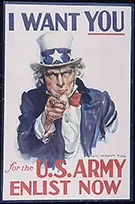Axis Powers and Leaders
The Axis powers were those countries that joined to attack Europe, Africa, the Mediterranean and the Pacific. When Germany, Italy and Japan became allies, the Axis powers were born. Other names for the Axis Powers are “The Three Party Pact” or the “Tripartite pact.” Together these three countries supported one another in their quest for more land and the destruction of the Soviet Nation.
The Second World War began almost as soon as the First World War ended. The Treaty of Versailles devastated Germany financially. The German people suffered for many years until they elected a young man named Adolf Hitler. He met with Benito Mussolini in 1936 and the pair discussed the threat of communism. Together, they decided to do something to destroy Communist Russia.


Adolf Hitler. Hitler is probably the most famous Axis power. Adolf was a young man who actually fought in the First World War. He felt that the treaty of Versailles humiliated Germany. The years of hardship that followed turned young Adolf from a quiet artist to a leader in social reform in the German Workers Party. In 1923, the police arrested Hitler for a failed coup attempt and spent a year in jail. He wrote Mein Kampf or “My struggle” that outlined his plans for making Germany a world power again.
The German people elected Hitler Chancellor in 1932. By 1935, Hitler’s follower, the Nazi Party, was the only recognized political party in Germany. One of the first things Hitler did was build up the German army. Even though the Treaty of Versailles forbade it, no one enforced the treaty. As Hitler’s military power grew, so did his desire for territory. In 1938, Germany signed the Munich Pact with many other heads of European countries. This treaty allowed Hitler to take over the Sudetenland and overturned the Treaty of Versailles. In 1939, he signed an agreement with Josef Stalin to divide Poland. When he invaded, Great Britain and France declared war, but did little to stop him.
At home, Hitler enacted his racial laws. These meant that only “pure” Germans had rights in Germany. Other people, including Jews and immigrants, had no rights. He forced Jews to live in ghettoes and passed laws making it illegal for them to own businesses, have German employees or leave the country with any wealth. Finally, Hitler built concentration camps. These camps worked inmates to death building everything from bricks to bombs. When people did not die fast enough, the Nazi’s used poison gas to kill them.
Adolf Hitler was sure that he would rule the world. When the war turned and it looked like he would lose, Hitler could not understand why. He married his fiancé and the pair died in a bunker under Berlin.

Benito Mussolini. Like Hitler, The Treaty of Versailles embarrassed Mussolini. As early as 1919, he actively worked to overthrow the government. He created a group of young men called “The Blackshirts” that supported him and frightened anyone who was against him. By 1925, he ruled Italy as a dictator and called himself “Il Duce,” which is Italian for “The Leader.” At this time, he was very popular with the Italian people.
After Italy attacked Ethiopia and Greece, things got tougher for the Italian people. When Britain and the United States declared war against Italy, they didn’t have the soldiers to fight the Allied forces. They fell to that Allies. Hitler sent troops to help Mussolini and together they drove the Allied forces away, for a little while. But in 1945, the Allied forces freed Rome. The Italian people caught Mussolini as he tried to escape to Switzerland and he died April 28, 1945.

Emperor Hirohito. Japan’s longest reigning emperor, Hirohito led Japan during the Second World War. Even today, many question his role in the war. He said he was a man of peace and that he did not want Japan to go to war. However, there are many pictures of him in military uniform and many fought in his name. When Japan surrendered, the emperor refused to take responsibility for the war and lived through the post-war reconstruction. He died in 1989 at the age of 87.
Prime Minister Hideki Tojo. Hideki Tojo believed in the Tripartrite Pact. When he led the Japanese military, he ordered them to attack China and was a firm believer in the growth of Japan. General Tojo ordered the attack on Pearl Harbor, beginning the war with the United States. He ran the military through the war. When the emperor surrendered in 1945, Prime Minister Tojo tried to kill himself, but failed. The United States military nursed him back to health. An international military tribunal tried Tojo and found gulty him guilty of war crimes in 1948. He died later that year.



